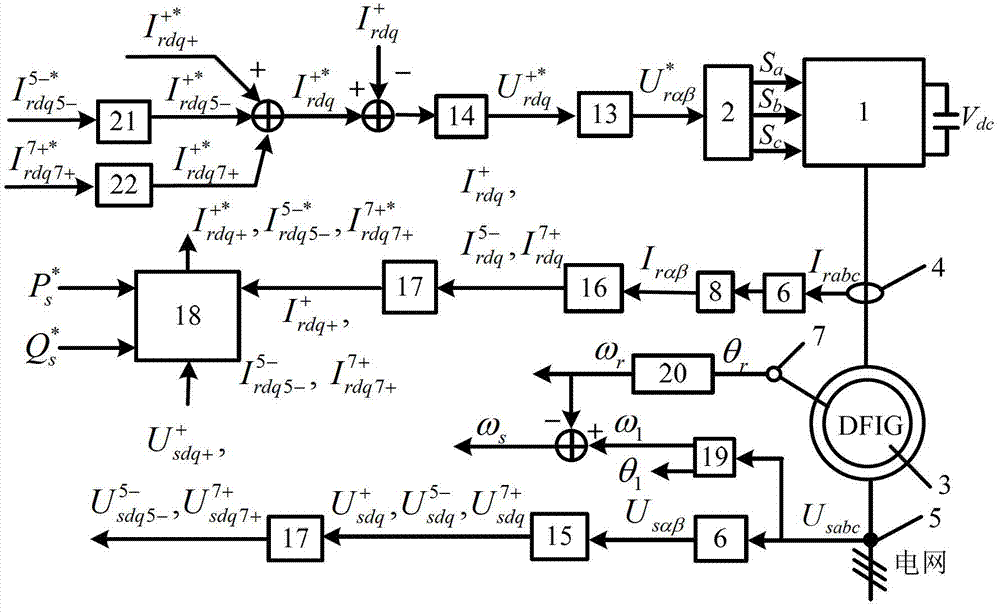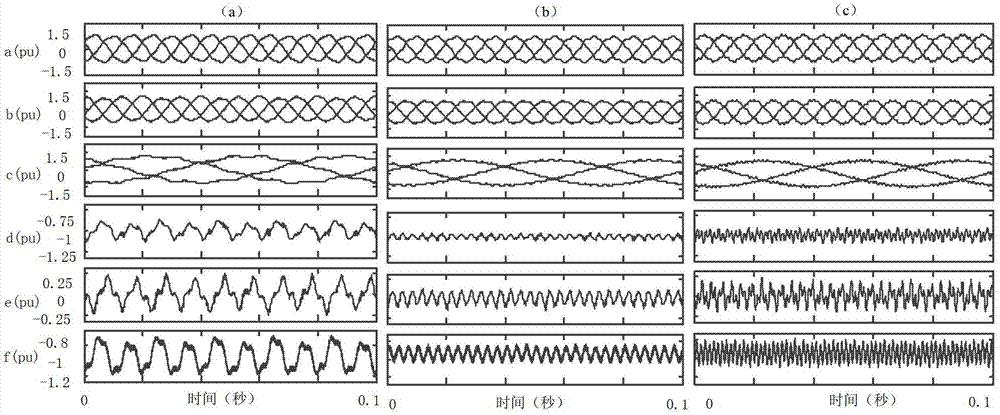Second-order slip form-based method for controlling doubly-fed wind generator (DFIG)
A second-order sliding mode and control method technology, which is applied to control systems, control generators, electrical components, etc., can solve problems such as occupying calculation time and software space codes, reducing the rapidity of system response, and losing the influence of harmonics
- Summary
- Abstract
- Description
- Claims
- Application Information
AI Technical Summary
Problems solved by technology
Method used
Image
Examples
Embodiment Construction
[0054] In order to describe the present invention more specifically, the DFIG control method of the present invention will be described in detail below in conjunction with the accompanying drawings and specific embodiments.
[0055] In this embodiment, the motor parameters of the DFIG to be controlled are as shown in Table 1:
[0056] Table 1
[0057]
[0058]
[0059] Such as figure 2 As shown, a DFIG control method based on the second-order sliding mode includes the following steps:
[0060] (1) Use the Hall voltage sensor 5 to collect the three-phase stator voltage U of DFIG sa ~ U sc , using the Hall current sensor 4 to collect the three-phase stator current I of DFIG sa ~ I sc and the three-phase rotor current I ra ~ I rc ; Utilize encoder 7 to detect the rotational speed ω and the rotor position angle θ of DFIG;
[0061] First, the three-phase stator voltage U is respectively calculated according to the following formula by using the Clarke transformation mo...
PUM
 Login to View More
Login to View More Abstract
Description
Claims
Application Information
 Login to View More
Login to View More - R&D
- Intellectual Property
- Life Sciences
- Materials
- Tech Scout
- Unparalleled Data Quality
- Higher Quality Content
- 60% Fewer Hallucinations
Browse by: Latest US Patents, China's latest patents, Technical Efficacy Thesaurus, Application Domain, Technology Topic, Popular Technical Reports.
© 2025 PatSnap. All rights reserved.Legal|Privacy policy|Modern Slavery Act Transparency Statement|Sitemap|About US| Contact US: help@patsnap.com



